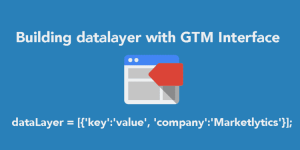Today, most businesses invest in multiple channels – Google ads, Facebook, Instagram, YouTube, TikTok, and more. Unless you know precisely which of these channels brings you the most value, you’ll waste a lot of money without realizing the benefit of each platform. Logically, if one platform brings more revenue than the other, you should spend more money on that particular one and cut your expenses on the other one(s). That’s why it’s essential to get the ad revenue attribution right.
In this article, we’ll provide in-depth answers to these questions:
1. What is ad revenue attribution, and what are its benefits?
2. What are the most common challenges marketers face when attributing ads (on their own)?
3. What are the solutions to these challenges?
4. How can hiring an expert help you get more accurate results?
After reading each segment carefully, you’ll better understand how to approach ad revenue attribution the right way.
Let’s dive into it.
What is ad revenue attribution and what are its benefits?
Ad revenue attribution is the process used to understand and determine the complete journey of your leads before making a purchase. In other words, through which marketing channels/traffic sources/campaigns they “traveled” before becoming conversions.
As a core part of revenue marketing, ad revenue attribution helps you connect conversions/purchases with exact activities and touchpoints inside your campaigns.
However, this process is not easy at all. Some of the most important questions you have to ask yourself as a marketer while acquiring data are:
- What was a lead’s original and final touchpoint?
- What was their journey in between?
- Which campaign had the most success?
- Which ad copy proved to be the best?
- What keyword is the most beneficial?
As you may already know, getting correct answers to all these questions can be tricky, and that’s why marketers face different challenges and make mistakes during the attribution process. We’ll talk about it later in the article.
But before that, I’ll list some of the crucial benefits of ad revenue attribution to show you why this process is of the utmost importance.
1. Accurate revenue reports
Whatever industry/niche you’re in, you likely have to provide monthly reports to your clients or C-level executives.
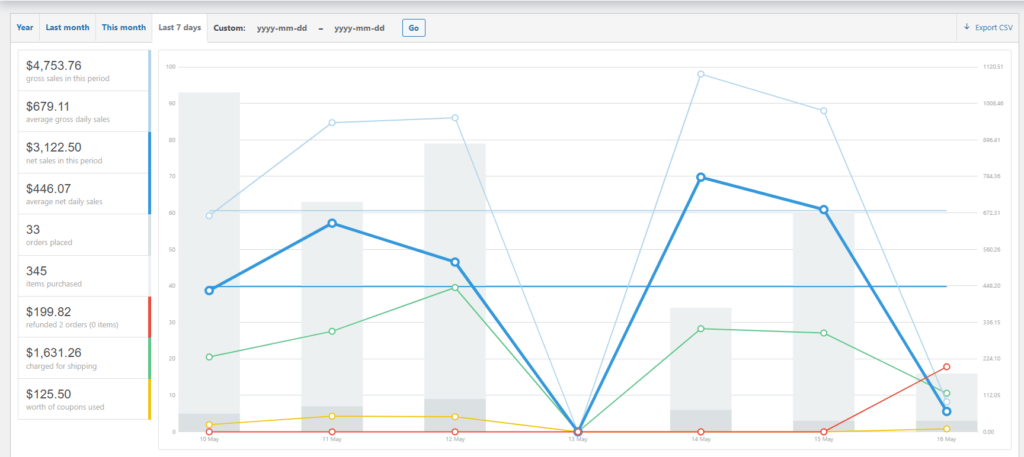
They need to know where they’re spending their money.
By doing accurate ad revenue attribution, you’ll know how each campaign contributes to the revenue. Accordingly, you’ll learn which channels make your client (or you) the most money and where to cut the expenses.
By measuring the profitability of each campaign for a few months, you’ll have a clear picture of what works and what does not. Hence, after a certain period, it’ll be easier for you to create successful campaigns and make your clients happy.
Happy clients – happy you!
2. It helps you prioritize your leads
Every niche is different. Therefore, the value of leads from one channel can be immense for one industry and completely insignificant for another.
For example, leads for your SaaS product coming from LinkedIn could convert 3x more than all other channels combined. In that case, it would make sense for you to double down on that channel and get even more conversions.
On the other hand, Facebook or Instagram will probably convert more for an ecommerce store.
And that’s the whole point – understand what platform gives you the most value and prioritize your efforts accordingly.
3. The Pareto Principle
Ah, the good-old Pareto Principle! If you’re not familiar with it – the simple explanation would be that 80% of consequences come from 20% of the causes.
What does it mean for a marketer and ad revenue?
Ad revenue attribution helps you determine the exact activities/campaigns that bring you (or your client) the most value. And you’ll likely be able to apply the Pareto Principle – 80% of your leads may be impacted by the optimization of 20% coming through marketing channels easier to influence by optimizing your spend.
4. Giving insights to sales teams
Passing the information about ad revenue attribution to the sales team could be the game-changer for their success.
It could help them understand the target audience better, get a better approach to the conversation, change their pitch accordingly, and, as a result, close more deals.
Let’s say you’re focusing on five keywords in your marketing campaign.
You’ll likely learn through the ad revenue attribution process that one or more keywords bring the most leads, especially when they’re related to leads’ pain points. In that case, inform your sales team about these keywords so they can construct their sales pitches and conversations around them.
The marketing and sales alignment, when done right, brings immense value.
Now, when you fully understand all the benefits of ad revenue attribution, we can move to the challenges & mistakes part.
This is crucial to acknowledge, so you don’t waste precious time and money making the same mistakes repeatedly.
What are the most common challenges marketers face when attributing ads (+ solutions)?
Challenge #1 – Total conversion results gathered from all platforms are bigger than your actual conversions/sales
Marketers often gather all the conversion results from Google or social media ads without questioning or comparing them with the actual number of conversions/sales.
You might ask yourself – why would I question the official results coming from any of these platforms?
The harsh reality is that every platform’s goal is to show you that they’re the ones who provide you with the most conversions. It’s for their benefit – to make you spend more money on their channels.
In most cases, it’ll likely happen that conversion results coming from all these channels will be higher than your actual conversions/sales because they all might claim credit for the same conversion.
Solution #1: Tie a user to user ID whenever possible
This is one of the best practices you can consider doing yourself. Whenever possible, tie a user with a user ID, so there is always a consistent identifier throughout the entire customer journey.
If you can track them with a consistent ID, whether it’s their email address, database ID, or a cookie ID, that would make it much easier for you to do the ad revenue attribution the right way.
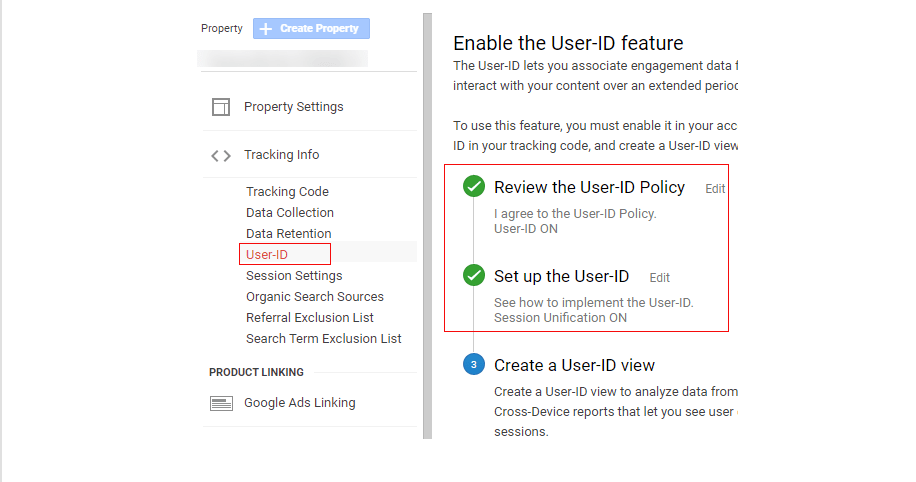
However, keep in mind that it’s not an easy task, and you still might need professional help.
Challenge #2 – Incomplete results from Google Analytics
Even if you try to centralize conversion results in Google Analytics or even a spreadsheet to simplify things, the situation can still get messy. By default, the amount of data you get in each platform is much more than you can get from GA.
Moreover, the problem with GA is that it credits the last source of conversion. We’ll give you an example.
Let’s say you click on a Facebook ad. Then you come to the website and sign up for a newsletter. Then you receive it, click on it, read it, and convert.
In this particular case, GA would state that you converted from the newsletter, and you won’t know how much Facebook contributed to that conversion.
It’s called the Last Non-Direct Click attribution model. That’s a default model GA uses, and it’s simplest because it only remembers the last channel the customer clicked to before converting. We talked about various revenue attribution models in this article.
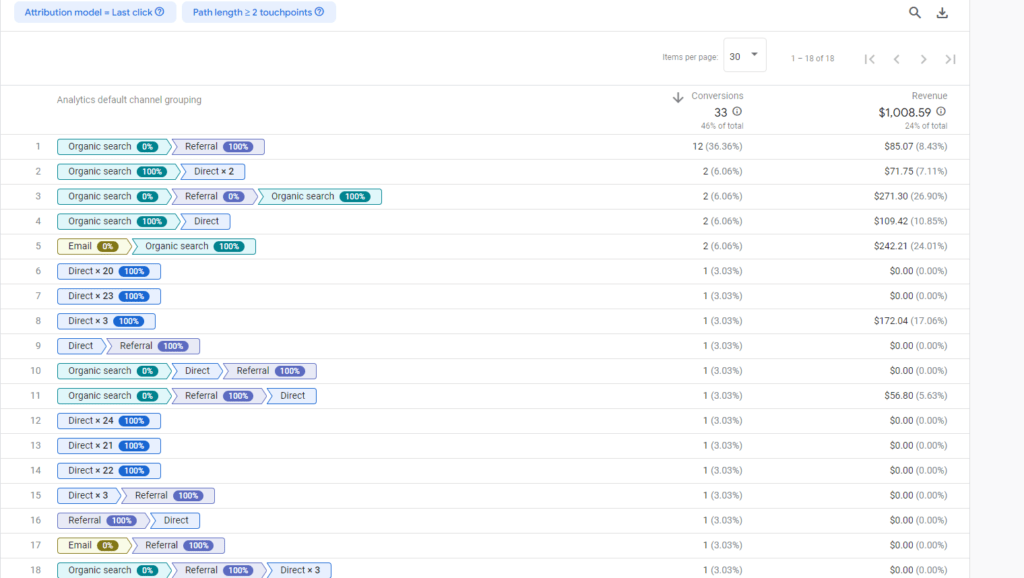
If you have numerous traffic sources and marketing channels, this model doesn’t suit your needs. Instead, you want to credit every source that participates in a single conversion.
Solution #2: Having the right UTM parameters set up correctly
If you’re not familiar with the term, UTM parameters are text strings added to URLs that help you track clicks to a particular link.
Once you get the click, the referring website URL gets passed to your analytics tool as the click source. It’s called “referrer” in the reports.
The five UTM parameters are:
- utm_source
- utm_medium
- utm_campaign
- utm_term
- utm_content
Without UTMs, you won’t be able to get accurate results on which of your campaigns gives you the most valuable clicks, which email list has the highest win rate, or which of your CTAs is the most successful.
Since you can follow many best practices with UTMs, we will highlight only a few of these that will help you get more accurate results for your ad revenue attribution.
2.1. Establish a naming convention
The UTM naming conventions are the naming rules you establish as the only approach to creating UTMs. It’s about how you combine and structure UTM parameters to get a single code.
For example, let’s say you’re doing a paid social promotion for your product launch campaign. For this campaign, the convention should be:
- Campaign: “product-launch” for all channels
- Medium: “paid-social”
- Source: The full name of the platform – “facebook” or “twitter”
Everyone on your team can use these clear instructions correctly, strengthening your UTM reports.
2.2. Make UTMs as close as you can to Google Analytics default channel grouping
There’s usually no room for inventions – simply follow GA’s default channel.
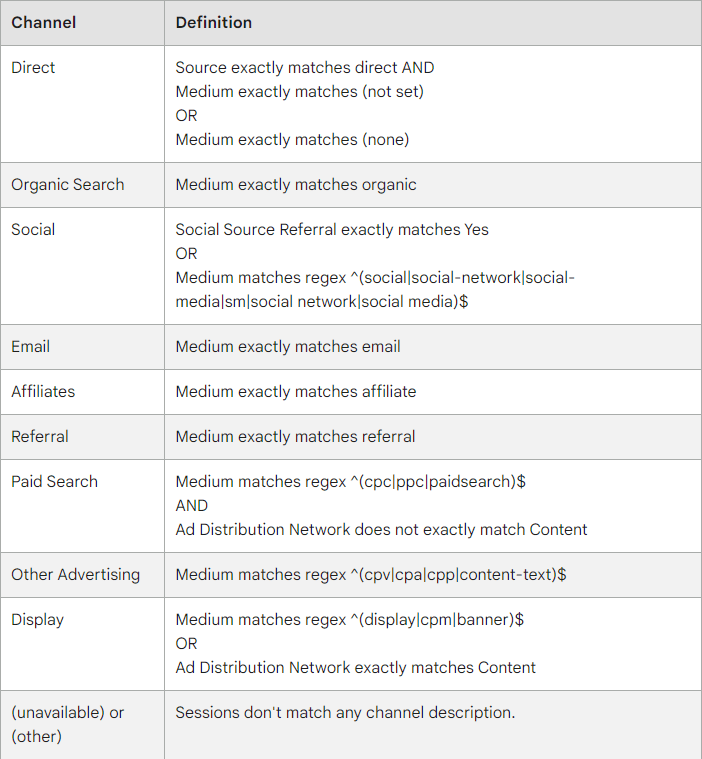
This way, it’ll be much easier for you to compare campaign data from the platforms you control with the organic ones you don’t, such as organic Google visits or email correspondence.
2.3. Use UTMs on referrers you control
Use UTMs to ensure consistency within the channel or platform you use them for.
Let’s use listings as an example.
Google My Business is an essential source of leads for a local business, and the business controls the links the listings use.
Therefore, it is highly beneficial to differentiate the local directories from other referrers for such a business.
Referrers pertain to local directories where you place the website link.
2.4. Never use UTMs on internal links
UTMs on internal links will eventually start a new visitor session, disrupting bounce rate data in campaign reports.
And as a result, you’ll also have inaccurate conversion data since you lost the user’s first touchpoint.
Challenge #3 – The cost of campaigns
In an ad platform, you can see the cost of your campaigns. But you also need to figure out how to have the cost of this data in your systems, which is not something automatically available.
Also, most cost-based attribution is calculated by taking the total revenue of the campaign and then dividing it by the total cost of the campaign. However, this approach overlooks the whole journey of an individual user.
Solution #3 – Tools can help
Tools like Supermetrics can help bring in cost data. Still, Google Analytics would only do last-click attribution, which means calculating ROI would be limited.
To have everything done right, apply the previous two solutions together with the results from the tool you use.
Or even better, hire an expert and save a ton of time.
How can hiring an expert help you get more accurate results?
Even though you can do the ad revenue attribution on your own based on the solutions I mentioned previously, it’s still not an easy thing to do.
Most likely, you might need expert help to collect data about your most valuable campaigns and traffic sources securely and privately, so the data is only available to you.
Based on data, experts like us can help you:
- Build the suitable attribution models
- Get valuable insights on what are the most important focus points for your attribution
- Learn why you should give more priority to a particular channel or why one campaign is more critical than others
- Address gaps in customer journeys
- Evaluate potential problems and opportunities
- Follow protocols for processing confidential data
- Create reports, data visualizations, and dashboards
- Get technical expertise on how to store your data
- And much, much more
You can schedule a free strategy call with us with no hard strings attached.
Conclusion
So, what are the key takeaways?
- You have to know which channels bring you the most value, so you don’t spend money left and right for no reason
- Accurate ad revenue attribution helps you understand the whole customer journey
- It enables you to prioritize your leads
- Tie a user to user ID
- Set up UTM parameters correctly
- Hire an expert to make sure your data is acquired the right way






